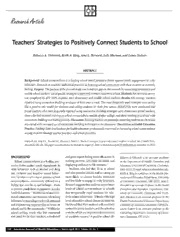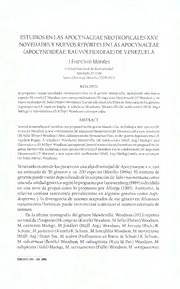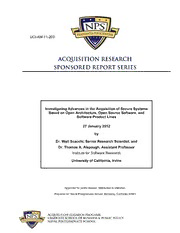
DTIC ADA559034: Investigating Advances in the Acquisition of Secure Systems Based on Open Architecture, Open Source Software, and Software Product Lines PDF
Preview DTIC ADA559034: Investigating Advances in the Acquisition of Secure Systems Based on Open Architecture, Open Source Software, and Software Product Lines
UCI-AM-11-203 ^`nrfpfqflk=obpb^o`e= pmlkploba=obmloq=pbofbp= = Investigating Advances in the Acquisition of Secure Systems Based on Open Architecture, Open Source Software, and Software Product Lines 27 January 2012 by Dr. Walt Scacchi, Senior Research Scientist, and Dr. Thomas A. Alspaugh, Assistant Professor Institute for Software Research University of California, Irvine Approved for public release, distribution is unlimited. Prepared for: Naval Postgraduate School, Monterey, California 93943 = ^Åèìáëáíáçå=oÉëÉ~êÅÜ=mêçÖê~ã= do^ar^qb=p`elli=lc=_rpfkbpp=C=mr_if`=mlif`v= k^s^i=mlpqdo^ar^qb=p`elli= Report Documentation Page Form Approved OMB No. 0704-0188 Public reporting burden for the collection of information is estimated to average 1 hour per response, including the time for reviewing instructions, searching existing data sources, gathering and maintaining the data needed, and completing and reviewing the collection of information. Send comments regarding this burden estimate or any other aspect of this collection of information, including suggestions for reducing this burden, to Washington Headquarters Services, Directorate for Information Operations and Reports, 1215 Jefferson Davis Highway, Suite 1204, Arlington VA 22202-4302. Respondents should be aware that notwithstanding any other provision of law, no person shall be subject to a penalty for failing to comply with a collection of information if it does not display a currently valid OMB control number. 1. REPORT DATE 3. DATES COVERED 27 JAN 2012 2. REPORT TYPE 00-00-2012 to 00-00-2012 4. TITLE AND SUBTITLE 5a. CONTRACT NUMBER Investigating Advances in the Acquisition of Secure Systems Based on 5b. GRANT NUMBER Open Architecture, Open Source Software, and Software Product Lines 5c. PROGRAM ELEMENT NUMBER 6. AUTHOR(S) 5d. PROJECT NUMBER 5e. TASK NUMBER 5f. WORK UNIT NUMBER 7. PERFORMING ORGANIZATION NAME(S) AND ADDRESS(ES) 8. PERFORMING ORGANIZATION University of California, Irvine,Institute for Software REPORT NUMBER Research,Irvine,CA,92697-3455 9. SPONSORING/MONITORING AGENCY NAME(S) AND ADDRESS(ES) 10. SPONSOR/MONITOR’S ACRONYM(S) 11. SPONSOR/MONITOR’S REPORT NUMBER(S) 12. DISTRIBUTION/AVAILABILITY STATEMENT Approved for public release; distribution unlimited 13. SUPPLEMENTARY NOTES 14. ABSTRACT The role of software acquisition ecosystems in the development and evolution of secure open architecture systems has received insufficient consideration. Such systems are composed of software components subject to different security requirements in an architecture in which evolution can occur by evolving existing components or by replacing them. However, this may result in possible security requirements conflicts and organizational liability for failure to fulfill security obligations. We have developed an approach for understanding and modeling software security requirements as ?security licenses,? for analyzing conflicts among groups of such licenses in realistic system contexts, and for guiding the acquisition integration, or development of systems with open source components in such an environment. Consequently, this paper reports on our efforts to extend our existing approach to specifying and analyzing software intellectual property licenses to now address software security licenses that can be associated with secure OA systems. 15. SUBJECT TERMS 16. SECURITY CLASSIFICATION OF: 17. LIMITATION OF 18. NUMBER 19a. NAME OF ABSTRACT OF PAGES RESPONSIBLE PERSON a. REPORT b. ABSTRACT c. THIS PAGE Same as 107 unclassified unclassified unclassified Report (SAR) Standard Form 298 (Rev. 8-98) Prescribed by ANSI Std Z39-18 The research presented in this report was supported by the Acquisition Chair of the Graduate School of Business & Public Policy at the Naval Postgraduate School. To request Defense Acquisition Research or to become a research sponsor, please contact: NPS Acquisition Research Program Attn: James B. Greene, RADM, USN, (Ret) Acquisition Chair Graduate School of Business and Public Policy Naval Postgraduate School 555 Dyer Road, Room 332 Monterey, CA 93943-5103 Tel: (831) 656-2092 Fax: (831) 656-2253 e-mail: jbgreene@nps.edu Copies of the Acquisition Sponsored Research Reports may be printed from our website www.acquisitionresearch.org = ^Åèìáëáíáçå=oÉëÉ~êÅÜ=mêçÖê~ã= do^ar^qb=p`elli=lc=_rpfkbpp=C=mr_if`=mlif`v= k^s^i=mlpqdo^ar^qb=p`elli= Table of Contents I. Advances in the Acquisition of Secure Systems Based on Open Architectures .................................................................................. 1 Abstract ...................................................................................................... 1 Biographies ................................................................................................ 1 A. Introduction ...................................................................................... 2 B. Related Work ................................................................................... 7 C. Secure Open Architecture Composition ........................................ 10 D. OA System Evolution ..................................................................... 18 E. Security Licenses .......................................................................... 22 F. Security License Architectures ...................................................... 24 G. Security License Analysis .............................................................. 25 H. Discussion ..................................................................................... 27 I. Conclusion ..................................................................................... 30 Acknowledgments .................................................................................... 31 References ............................................................................................... 31 II. Presenting Software License Conflicts through Argumentation ........................................................................................ 35 Abstract .................................................................................................... 35 A. Introduction .................................................................................... 35 B. Related Work ................................................................................. 38 C. Licensing Background ................................................................... 39 D. License Rights and Obligations ..................................................... 43 E. Applying Licenses to Software ...................................................... 46 F. Conclusion ..................................................................................... 53 = = ^Åèìáëáíáçå=oÉëÉ~êÅÜ=mêçÖê~ã= do^ar^qb=p`elli=lc=_rpfkbpp=C=mr_if`=mlif`v - i - k^s^i=mlpqdo^ar^qb=p`elli= Acknowledgements .................................................................................. 53 References ............................................................................................... 54 III. Modding as an Open Source Approach to Extending Computer Game Systems ...................................................................... 57 Abstract .................................................................................................... 57 A. Introduction .................................................................................... 57 B. Related Work ................................................................................. 60 C. Four Types of Game Mods ............................................................ 63 D. Game Modding Software Tools and Support ................................. 69 E. Opportunities and Constraints for Modding ................................... 71 F. Conclusions ................................................................................... 72 Acknowledgments .................................................................................... 73 References ............................................................................................... 74 IV. Modding as a Basis for Developing Game Systems ........................... 77 Abstract .................................................................................................... 77 A. Introduction .................................................................................... 78 B. Software Extension ........................................................................ 80 C. Four Types of Game Mods ............................................................ 81 D. Game Modding Software tools and Support .................................. 86 E. Opportunities for Modding and Software Engineering ................... 88 Acknowledgements .................................................................................. 88 References ............................................................................................... 88 V. Final Report Discussion and Prospects for Future Acquisition Research ............................................................................ 91 A. Overview ....................................................................................... 91 = = ^Åèìáëáíáçå=oÉëÉ~êÅÜ=mêçÖê~ã= do^ar^qb=p`elli=lc=_rpfkbpp=C=mr_if`=mlif`v - ii - k^s^i=mlpqdo^ar^qb=p`elli= B. Inter-Project Research Coordination ............................................. 92 C. Prospects for Longer Term Acquisition-Related Research ............ 92 Acknowledgments .................................................................................... 93 References ............................................................................................... 93 = = ^Åèìáëáíáçå=oÉëÉ~êÅÜ=mêçÖê~ã= do^ar^qb=p`elli=lc=_rpfkbpp=C=mr_if`=mlif`v - iii - k^s^i=mlpqdo^ar^qb=p`elli= THIS PAGE INTENTIONALLY LEFT BLANK = = ^Åèìáëáíáçå=oÉëÉ~êÅÜ=mêçÖê~ã= do^ar^qb=p`elli=lc=_rpfkbpp=C=mr_if`=mlif`v - iv - k^s^i=mlpqdo^ar^qb=p`elli= I. Advances in the Acquisition of Secure Systems Based on Open Architectures Walt Scacchi and Thomas A. Alspaugh Institute for Software Research University of California, Irvine Irvine, CA 92697-3455 USA wscacchi@ics.uci.edu, thomas.alspaugh@acm.org Abstract The role of software acquisition ecosystems in the development and evolution of secure open architecture systems has received insufficient consideration. Such systems are composed of software components subject to different security requirements in an architecture in which evolution can occur by evolving existing components or by replacing them. However, this may result in possible security requirements conflicts and organizational liability for failure to fulfill security obligations. We have developed an approach for understanding and modeling software security requirements as “security licenses,” for analyzing conflicts among groups of such licenses in realistic system contexts, and for guiding the acquisition, integration, or development of systems with open source components in such an environment. Consequently, this paper reports on our efforts to extend our existing approach to specifying and analyzing software intellectual property licenses to now address software security licenses that can be associated with secure OA systems. Biographies Walt Scacchi is a senior research scientist and research faculty member at the Institute for Software Research, University of California, Irvine. He received a PhD in Information and Computer Science from UC Irvine in 1981. From 1981–1998, he was on the faculty at the University of Southern California. In 1999, he joined the Institute for Software Research at UC Irvine. He has published more than 150 research papers and has directed 45 externally funded research projects. In 2007, = = ^Åèìáëáíáçå=oÉëÉ~êÅÜ=mêçÖê~ã= do^ar^qb=p`elli=lc=_rpfkbpp=C=mr_if`=mlif`v - 1 - k^s^i=mlpqdo^ar^qb=p`elli= he served as General Chair of the 3rd IFIP International Conference on Open Source Systems (OSS2007), Limerick, IE. In 2010, he chaired the Workshop on the Future of Research in Free and Open Source Software, Newport Beach, CA, for the Computing Community Consortium and the National Science Foundation. He also serves as Co-Chair of the Software Engineering in Practice (SEIP) Track at the 33rd International Conference on Software Engineering, May 21–28, 2011, Honolulu, HI. Thomas Alspaugh is adjunct professor of Computer Science at Georgetown University and a visiting researcher at the Institute for Software Research at UC Irvine. His research interests are in software engineering and software requirements. Before completing his Ph.D., he worked as a software developer, team lead, and manager in industry, and as a computer scientist at the Naval Research Laboratory on the Software Cost Reduction project, also known as the A-7E project. A. Introduction A substantial number of development organizations are adopting a strategy in which a software-intensive system is developed with an open architecture (OA; Oreizy, 2000), whose components may be open source software (OSS) or proprietary with open application programming interfaces (APIs). Such systems evolve not only through the evolution of their individual components, but also through replacement of one component by another, possibly from a different producer or under a different license. With this approach to software system acquisition, the system development organization becomes an integrator of components largely produced elsewhere that are interconnected through open APIs as necessary to achieve the desired result. An OA development process arises in a software acquisition ecosystem in which the integrator is influenced from one direction by the goals, interfaces, license choices, and release cycles of the component producers, and in another direction by the needs of its consumers. As a result, the software components are reused more widely, and the resulting OA systems can achieve reuse benefits such as reduced = = ^Åèìáëáíáçå=oÉëÉ~êÅÜ=mêçÖê~ã= do^ar^qb=p`elli=lc=_rpfkbpp=C=mr_if`=mlif`v - 2 - k^s^i=mlpqdo^ar^qb=p`elli= costs, increased reliability, and potentially increased agility in evolving to meet changing needs. An emerging challenge is to realize the benefits of this approach when the individual components are subject to different security requirements. This may arise due either to how a component’s external interfaces are specified and defended, or to how system components are interconnected and configured in ways that can or cannot defend the composed system from security vulnerabilities and external exploits. Ideally, any software element in a system composed from components from different producers can have its security capabilities specified, analyzed, and implemented at system architectural design-time, build-time, or at deployment run- time. Such capability-based security in its simplest form specifies what types, value ranges, and values of data, or control signals (e.g., program invocations, procedure or method calls), can be input, output, or handed off to a software plug-in or external (helper) application from a software component or composed system. When designing a secure OA system, decisions and trade-offs must be made as to what level of security is required, as well as to what kinds of threats to security must be addressed. The universe of possible security threats is continually emerging and the cost/effort of defending against them is ongoing. Similarly, anticipating all possible security vulnerabilities or threats is impractical (or impossible). Further, though it may be desirable that all systems be secure, different systems need different levels of security, which may come at ever greater cost or inconvenience in order to accommodate. Strategic systems may need the greatest security possible, whereas other systems may require much less rigorous security mechanisms. Thus, finding an affordable, scalable, and testable means for specifying the security requirements of software components, or OA systems composed with components with different security requirements, is the goal of our research. The most basic form of security requirements that can be asserted and tested are those associated with virtual machines. Virtual machines (VM) abstract away the = = ^Åèìáëáíáçå=oÉëÉ~êÅÜ=mêçÖê~ã= do^ar^qb=p`elli=lc=_rpfkbpp=C=mr_if`=mlif`v - 3 - k^s^i=mlpqdo^ar^qb=p`elli=
The list of books you might like

The Strength In Our Scars

$100m Offers

Rich Dad Poor Dad

Can’t Hurt Me: Master Your Mind and Defy the Odds

Microtus hyperboreus (Mammalia, Rodentia) in south-eastern Yakutia
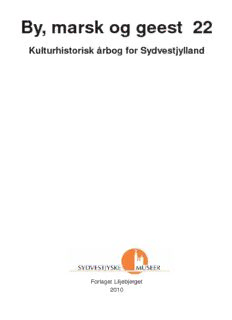
By, marsk og geest 22
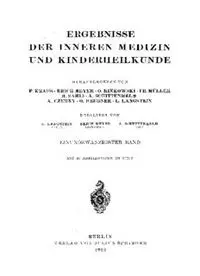
Ergebnisse der Inneren Medizin und Kinderheilkunde: Einundzwanzigster Band

Évaluations formative et certificative des apprentissages

Hindi Kahanikaro Ke Kathachintan Ke Sandrabh Main Unke Kahani Sahitya Ka Mulyakan

Sandkings

Greek Government Gazette: Part 3, 2006 no. 434

Greek Government Gazette: Part 3, 2006 no. 471
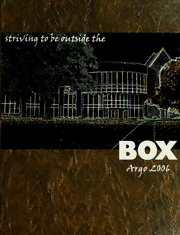
Argo

Hacker im Wandel der Zeit: über die differenzierte Verwendung des Hackerbegriffes

32073 Amherst Annual Report 2012-2013_web.indd

COLONIALITY, MATE RETENTION, AND NEST-SITE CHARACTERISTICS IN THE SEMIPALMATED SANDPIPER

PSIDIUM CAULIFLORUM (MYRTACEAE), A NEW SPECIES FROM BAHIA, BRAZIL

Stabilization of high-order solutions of the cubic Nonlinear Schrodinger Equation

Nidification of Dwarf Whistler Pachycare flavogriseum, a little-known New Guinea endemic
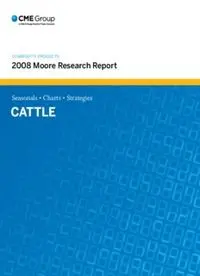
Historical Live Cattle/Feeder Cattle Report

